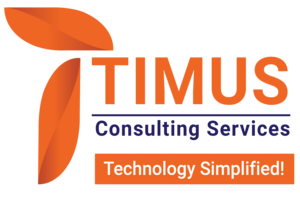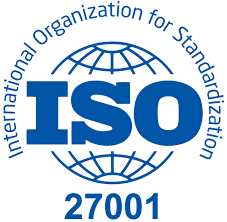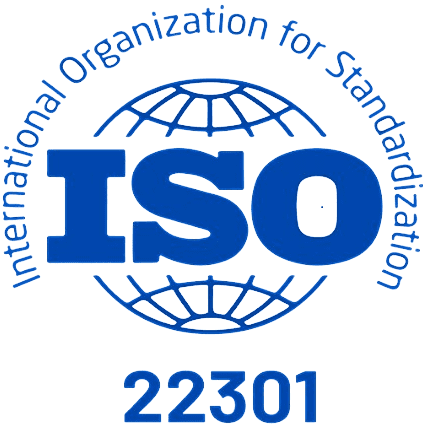Introduction
In the digital age, the rapid expansion of technology has brought about unprecedented opportunities and challenges. As businesses and individuals become increasingly reliant on digital infrastructure, the importance of managing IT risk and ensuring robust cybersecurity measures cannot be overstated. This blog delves into the critical aspects of IT risk and cybersecurity, highlighting their significance, common threats, and strategies to protect your digital assets.
Understanding IT Risk
IT risk refers to the potential for losses or disruptions in an organization’s information technology systems that can affect its operations, financial performance, and reputation. These risks can stem from a variety of sources, including hardware failures, software vulnerabilities, human errors, and cyberattacks. Key types of IT risk include:
1. Operational Risk
Operational risks arise from failures in internal processes, systems, or policies. These can include system outages, data breaches, or failures in data integrity and availability.
2. Compliance Risk
Compliance risk involves the potential for regulatory or legal penalties due to non-compliance with laws, regulations, or standards. This is particularly relevant for industries subject to stringent data protection regulations such as GDPR or HIPAA.
3. Strategic Risk
Strategic risk pertains to risks that affect an organization’s ability to achieve its long-term goals. These can include poor IT strategy alignment with business objectives or failing to keep up with technological advancements.
4. Reputational Risk
Reputational risk refers to the potential damage to an organization’s reputation resulting from IT failures or data breaches. Such incidents can lead to loss of customer trust and a decline in market value.
The Role of Cybersecurity
Cybersecurity is the practice of protecting systems, networks, and data from digital attacks. It encompasses a range of technologies, processes, and practices designed to safeguard digital assets from unauthorized access, theft, or damage. Key elements of cybersecurity include:
1. Threat Detection and Prevention
This involves identifying potential threats and implementing measures to prevent cyberattacks. Techniques include the use of firewalls, intrusion detection systems, and antivirus software.
2. Incident Response and Recovery
Incident response involves preparing for and responding to cybersecurity incidents such as data breaches or malware attacks. Effective incident response plans ensure that organizations can quickly recover from cyber incidents and minimize damage.
3. Data Protection and Encryption
Data protection measures ensure the confidentiality, integrity, and availability of data. Encryption is a crucial tool that transforms data into a secure format, making it inaccessible to unauthorized users.
4. Access Control and Authentication
Access control mechanisms restrict access to sensitive data and systems to authorized users only. Multi-factor authentication (MFA) adds an extra layer of security by requiring multiple forms of verification.
Common Cybersecurity Threats
Understanding the landscape of cybersecurity threats is essential for developing effective defenses. Common threats include:
1. Malware
Malware, or malicious software, includes viruses, worms, trojans, and ransomware. It can disrupt operations, steal data, or encrypt files for ransom.
2. Phishing
Phishing attacks involve fraudulent attempts to obtain sensitive information, such as login credentials or financial data, by pretending to be a trustworthy entity.
3. Denial of Service (DoS) Attacks
DoS attacks overwhelm a system with traffic, rendering it unable to provide services. Distributed DoS (DDoS) attacks involve multiple systems working together to flood a target.
4. Insider Threats
Insider threats originate from within the organization and can be malicious or accidental. Employees, contractors, or partners with access to systems can inadvertently or intentionally cause harm.
5. Advanced Persistent Threats (APTs)
APTs are prolonged and targeted cyberattacks where intruders gain ongoing access to a network to steal sensitive information over time.
Strategies for Mitigating IT Risk and Enhancing Cybersecurity
To protect against IT risks and cyber threats, organizations should adopt a comprehensive approach that includes the following strategies:
1. Risk Assessment and Management
Conduct regular risk assessments to identify and prioritize IT risks. Develop a risk management plan that includes mitigation strategies and contingency plans.
2. Employee Training and Awareness
Educate employees about cybersecurity best practices and the importance of vigilance. Regular training sessions can help employees recognize and respond to potential threats.
3. Implementing Robust Security Policies
Develop and enforce security policies that cover data protection, access control, incident response, and acceptable use. Ensure these policies are regularly reviewed and updated.
4. Deploying Advanced Security Technologies
Invest in advanced security solutions such as next-generation firewalls, intrusion detection and prevention systems, and endpoint protection platforms. Use encryption to protect sensitive data in transit and at rest.
5. Regular Monitoring and Auditing
Continuously monitor IT systems for suspicious activity and conduct regular audits to ensure compliance with security policies and regulations. Use automated tools to detect and respond to threats in real time.
6. Collaboration and Information Sharing
Collaborate with industry peers, government agencies, and cybersecurity organizations to stay informed about the latest threats and best practices. Participate in information-sharing initiatives to enhance collective cybersecurity efforts.
Conclusion
In an era where digital threats are ever-evolving, managing IT risk and ensuring robust cybersecurity are critical for safeguarding your organization’s digital future. By understanding the various types of IT risks and common cybersecurity threats, and by implementing comprehensive risk management and security strategies, organizations can protect their digital assets, maintain compliance, and build resilience against cyberattacks. Investing in cybersecurity is not just a defensive measure; it’s a strategic imperative that enables businesses to thrive in the digital age.
About us
We are Timus Consulting Services, a fast-growing, premium Governance, Risk, and compliance (GRC) consulting firm, with a specialization in theGRC implementation, customization, and support.
Our team has consolidated experience of more than 15 years working with financial majors across the globe. Our team is comprised of experienced GRC and technology professionals that have an average of 10 years of experience. Our services include:
- GRC implementation, enhancement, customization, Development / Delivery
- GRC Training
- GRC maintenance, and Support
- GRC staff augmentation
Our team
Our team (consultants in their previous roles) have worked on some of the major OpenPages projects for fortune 500 clients across the globe. Over the past year, we have experienced rapid growth and as of now we have a team of 15+ experienced and fully certified OpenPages consultants, OpenPages QA and OpenPages lead/architects at all experience levels.
Our key strengths:
Our expertise lies in covering the length and breadth of the IBM OpenPages GRC platform. We specialize in:
- Expert business consulting in GRC domain including use cases like Operational Risk Management, Internal Audit Management, Third party risk management, IT Governance amongst others
- OpenPages GRC platform customization and third-party integration
- Building custom business solutions on OpenPages GRC platform
Connect with us:
Feel free to reach out to us for any of your GRC requirements.
Email: [email protected]
Phone: +91 9665833224
WhatsApp: +44 7424222412
Website: www.Timusconsulting.com





